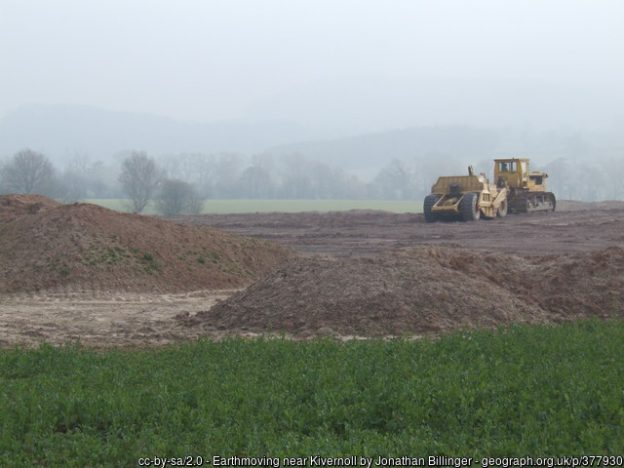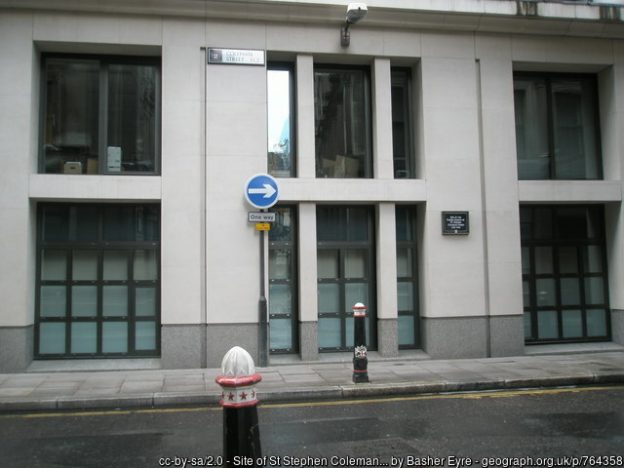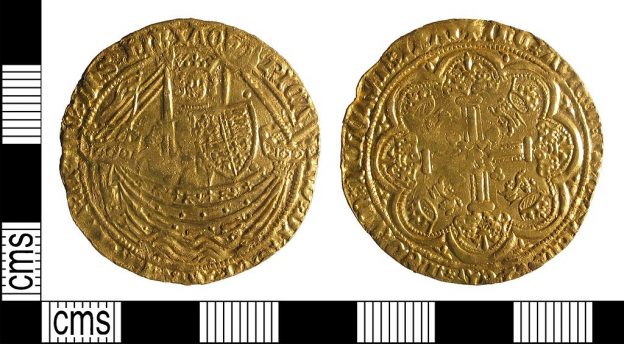Updated version of this post
(This post contains references to sexual offences and sexual violence)
Despite the lack of interest in this area which is shown in the leading textbook on medieval English legal history, (you have a look at Baker’s Introduction to English Legal History editions 1-5 …), the study of sexual offences has seemed to the better sort of social historians and history-based legal historians to be something worthy of considerable attention, just as it has done to many modern legal scholars. There has been some excellent work, examining the implications of the word raptus (summary: it’s complicated) and differences over time, in terms of the basic allegations which appear in legal records. One aspect which has not been to the fore is the very occasional use of metaphorical language in these records, in relation to sexual offences, specifically the use of the image of weaponry to stand in for male genitalia.
I mused about this in a previous post, and updated it a little here,* when I found some more examples, and it seemed worth revisiting, and perhaps trying to discuss the matter with those who might have wider, relevant, expertise (over a longer time-span, or else a broader knowledge of other sources – literary, theological … than is possible for a legal scholar stepping out of her lane quite enough by taking on medieval history…).
In the first post, to summarise, I noted an entry on the King’s Bench plea roll for Easter 1435 relating to proceedings against a clerk, Thomas Harvy, for alleged offences in Norfolk, including a sexual offence (which was probably understood to be ‘consensual’ – at least in contemporary terms of an absence of overt physical struggle).[i] Jurors had presented before the justices of the peace that, on 1st October 1433, Thomas Harvy of Testerton, clerk, … broke into the house of John Serjeant of Colkirk, at Colkirk, and attacked Margaret, John’s wife, wounding her shamefully (turpiter) with a certain carnal lance called, in English, a ‘ballokhaftitdagher’, and so he continued to do until that day, setting a bad example etc., to John’s great damage and against John’s will.’[ii]
I did, at first, question my reading of the carnal lance/ ballokhaftitdagher’: could the lance perhaps have been some sort of butchery implement? But both terms being used together made a pretty strong case for seeing the ‘carnal lance’ and ‘ballock hafted dagger’ as evoking not actual weapons but metaphorical weapons, and to refer to male genitalia.
I had come across the ‘carnal lance’ image on its own in a very small number of other cases.[iii] Another ‘carnal lance’ reference, in a 1483 Devon indictment,[iv] does seem to separate the attack with the lance and the sexual penetration, so did make me wonder once more whether I might be talking fanciful nonsense, but yet another, from the same county and roll, mentions the use in an attack on a female servant of both ‘carnal lance’ and two ‘stones’.[v] A metaphorical link between testicles and stones was certainly present in the medieval period, and appears, for example, in the Mirror of Justices, in a discussion of mayhem (Book I c. 9). It is, of course, still hard to be sure that this was not a real lance and real stones, but the more examples I find of the link between weapon-talk and sexual offence cases, the less likely that seems.
I have not gone out looking for references in a systematic way, and it seems unlikely that I have, by chance, found all of them. The best view which I can give at the moment is that this was a known idiom/image in later medieval England, and an unusual, but not unknown, inclusion in legal records.
Update, 29th May, 2022
I found another reference to carnal lances and stones, from Devon, from an indictment file for Hilary term 1482 – this time I think it really does confirm that carnal lances were not actual lances, and stones were not actual stones, in some legal records. It is a deeply unpleasant sexual assault accusation, in which a certain William Gamon, clerk, was accused of what would now be called a rape (though no ‘rape term’ is used, and neither are words of felony) on Joan, wife of John Stonehewer, on two separate occasions.
A rough-and-ready translation of The case on KB 9/359 m.2 would be:
‘[A Devon jury on 12 October 1480] said on oath that Wm Gamon, [ff] recently of [Denbury], Devon, on 2nd July and 10th October 1479, with force and arms and against the peace of the lord king, with staves and knives and also a carnal lance, broke and entered the houses of John Stonehewer at Denbury and Ottery St Mary, hit John’s wife, Joan, several times, and then hit and penetrated her with the aforesaid lance and two stones hanging in the said William’s nether regions, in a certain hairy opening between her two thighs, in the rear, so that her life was despaired of and against the peace of the lord king.’
Aside from confirming the lance/stones metaphor usage, this introduces further examples of figurative language for body parts in the sexual context. The woman’s body is discussed in particularly demeaning terms here, which is not very surprising really, but which reinforces the everyday misogyny which would have pervaded the atmosphere of medieval courts.
Update, 26th June, 2022
Another one – going back to the 1440s: KB 9/293 m. 2 shows a Kent jury swearing that Richard Kay, parson of the church of Hartley, on 20th November 1439, broke into and entered the house of Thomas Cotyer in Hartley, with force and arms, and, in a barn, assaulted Rose, Thomas Cotyer’s wife, beat and wounded and mistreated her, and hit her so severely with a certain carnal lance between her thighs, that she fell to the floor onto her back, and then he lay with her, against the king’s peace. They added that Richard was ‘a common adulterer etc.’[vi]
Why is this interesting, and what does it all mean?
If the ‘weapons’ are metaphorical, what then? First it is worth noting that a resort to metaphorical language is unusual within the generally unfanciful context of medieval plea rolls. It was not necessary to describe the (alleged) offences in this way. Secondly, it should be acknowledged that the use of weapon-imagery is a well-known practice in literary sources.[vii] What are the implications of this weapon imagery in the legal context? Several things occur to me, all a little tentative just now – I would certainly be interested to know what others think. Here are some of them:
- I wonder whether we can read into the occasional intrusion of this sort of imagery in entries on the legal record something of the mood of discussion about such offences, amongst the men involved in making records, or those in court. Is there validity to my intuitive reaction that it sounds like joking about and diminishing the seriousness, or the wrong, of sexual assault and rape? Might it be argued to show the exact opposite: since we know that these prosecutions almost never ‘succeeded’ in the sense of ending with a conviction and punishment according to secular law, aligning it more closely with the ‘ordinary’ sort of violence (and especially categorising the harm as a ‘wound’, as in ‘ordinary’ batteries etc.) showed a greater-than-usual degree of concern. The ‘rape: an offence (predominantly) of sex or violence?’ question is something of an ‘old chestnut’ in modern legal scholarship, but I think that there is some worth in considering linking up those debates with the work on rape/sexual offences in historical studies, which does not always deal with this point.
- What does the weapon imagery say about ideas of men, rape and sex?
- Does associating offending sex with a weapon in some sense dissociate man and penis, and, if so, is this something which serves to minimise – or ‘outsource’ – culpability?
- How does the association work with ideas/reality of rape as a weapon in (medieval) warfare?
- What does it all say about contemporary ideas of (socially sanctioned) sex? We are well used to the medieval idea of heterosexual encounters as asymmetrical, perhaps with a ‘playful’ combat aspect. Does using the weapon idea in sexual offence cases suggest an acceptance of a continuity between offending and non-offending sex?
- If weapon-imagery is to be used, what is the reason to choose one type of weapon rather than another? What implications might there be in choosing a lance rather than a dagger, a Latin/French term or an English one?
As ever with medieval legal records, far more loose ends and questions than concrete findings, but, I will stick my neck out a tiny bit and make one statement based on all of this. It does seem to me that one thing the use of weapon-words must have done was to reinforce the connections between the men involved in the legal process (jurors, clerks, those in court) and place them in opposition to the woman against whom, or with regard to whose body, the offence had, allegedly, been committed. The wielding of such weapons was a thing clearly gendered male, and, as such, something drawing men together in exclusion of women. Probably not, therefore, something conducive to a receptive attitude to allegations of a crime against a woman’s body.
GS
Note on terminology: I have generally stuck to ‘sexual offences’ here, because of an imperfect mapping on to modern conceptions of ‘rape’ of the ideas and definitions current in the medieval common law. There is probably not a satisfactory way of dealing with this mismatch, or at least I have not found one, and my choice is not intended to minimise the severity of the harm suffered, or the culpability of offenders of the past.
Image: I am going for a general suggestion of ‘puzzling’ here: a maze, Photo by Ben Mathis Seibel on Unsplash
[i] KB 27/697 Rex m.5 AALT IMG 0183. You can see a scan of the record here on the AALT website.
[ii] For the ‘ballock hafted dagger’ (a real weapon), see the earlier post, and Ole-Magne Nøttveit, ‘The Kidney Dagger as a Symbol of Masculine Identity – The Ballock Dagger in the Scandinavian Context’, Norwegian Archaeological Review 39, no. 2 (2006), 138-50.
[iii] KB 9/359/mm 67, 68 (these two also mention stones); AALT IMG 141 (1482). There are two on KB 9/359 m.3
[vi] This also appears on the KB plea roll: KB 27/725 m. 31d; AALT IMG 567 (1442), in which Richard pleaded not guilty, but made fine, ‘in order to save everyone trouble’.[vi] The fine was 40s, according to the roll.
[vii] See, e.g., D. Izdebska, ‘Metaphors of weapons and armour through time’, in W. Anderson, E. Bramwell, C. Hough, Mapping English Metaphor Through Time (Oxford, 2016), c. 14; C. Saunders, Rape and Ravishment in the Literature of Medieval England (Woodbridge, 2001), 42; R. Mazo Karras, Sexuality in Medieval Europe: Doing Unto Others, third edn, (Abingdon, 2017), 26, 151, 172; Robert Clark ‘Jousting without a lance’, in F.C. Sautman and P. Sheingorn (eds), Same Sex Love and Desire Among Women in the Middle Ages (New York, 2001), 143-77, 166. The Dictionary of Medieval Latin from British Sources (Brepols, 2018) suggests this meaning too, in its sixth variation on ‘hasta’.











